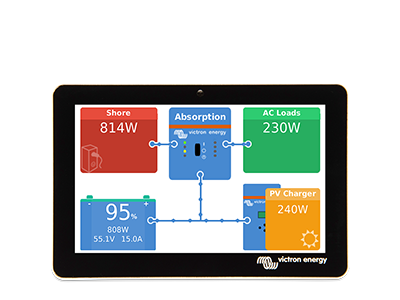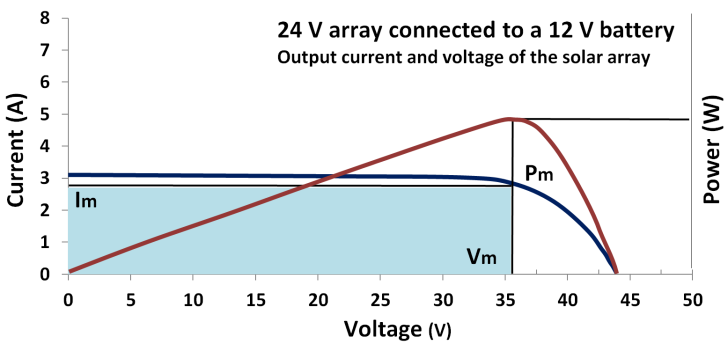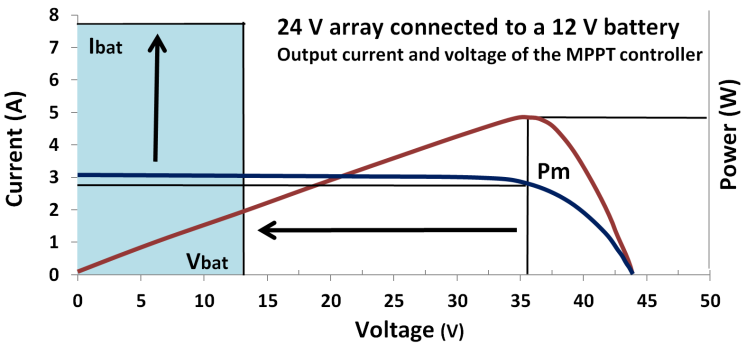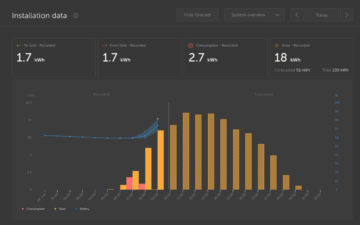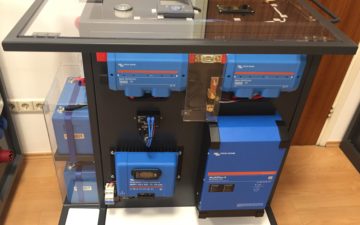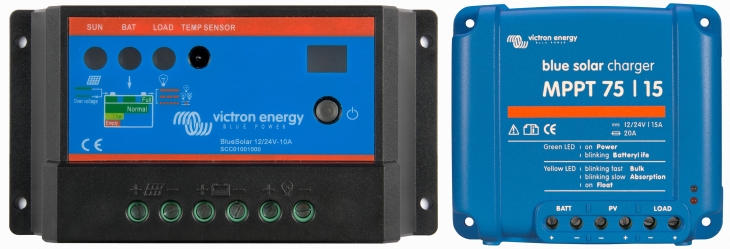
What follows is a summary of our white paper with the same title.
For the full white paper, see: Which solar charge controller: PWM or MPPT? in the White papers section of our site.
1. What they do
The PWM controller is in essence a switch that connects a solar array to a battery. The result is that the voltage of the array will be pulled down to near that of the battery.
The MPPT controller is more sophisticated (and more expensive): it will adjust its input voltage to harvest the maximum power from the solar array and then transform this power to supply the varying voltage requirement, of the battery plus load. Thus, it essentially decouples the array and battery voltages so that there can be, for example, a 12 volt battery on one side of the MPPT charge controller and a large number of cells wired in series to produce 36 volts on the other.
Example of a large number of cells wired in series to produce 36 volts
Graphical representation of the DC to DC transformation as performed by an MPPT controller
2. The resultant twin strengths of an MPPT controller
a) Maximum Power Point Tracking
The MPPT controller will harvest more power from the solar array. The performance advantage is substantial (10% to 40%) when the solar cell temperature is low (below 45°C), or very high (above 75°C), or when irradiance is very low.
At high temperature or low irradiance the output voltage of the array will drop dramatically. More cells must then be connected in series to make sure that the output voltage of the array exceeds battery voltage by a comfortable margin.
b) Lower cabling cost and/or lower cabling losses
Ohm’s law tells us that losses due to cable resistance are Pc (Watt) = Rc x I², where Rc is the resistance of the cable. What this formula shows is that for a given cable loss, cable cross sectional area can be reduced by a factor of four when doubling the array voltage.
In the case of a given nominal power, more cells in series will increase the output voltage and reduce the output current of the array (P = V x I, thus, if P doesn’t change, then I must decrease when V increases).
As array size increases, cable length will increase. The option to wire more panels in series and thereby decrease the cable cross sectional area with a resultant drop in cost, is a compelling reason to install an MPPT controller as soon as the array power exceeds a few hundred Watts (12 V battery), or several 100s of Watts (24 V or 48 V battery).
3. Conclusion
PWM
The PWM charge controller is a good low cost solution for small systems only, when solar cell temperature is moderate to high (between 45°C and 75°C).
MPPT
To fully exploit the potential of the MPPT controller, the array voltage should be substantially higher than the battery voltage. The MPPT controller is the solution of choice for higher power systems (because of the lowest overall system cost due to smaller cable cross sectional areas). The MPPT controller will also harvest substantially more power when the solar cell temperature is low (below 45°C), or very high (above 75°C), or when irradiance is very low.
The summary above and the full white paper, has been written and compiled by Reinout Vader.



